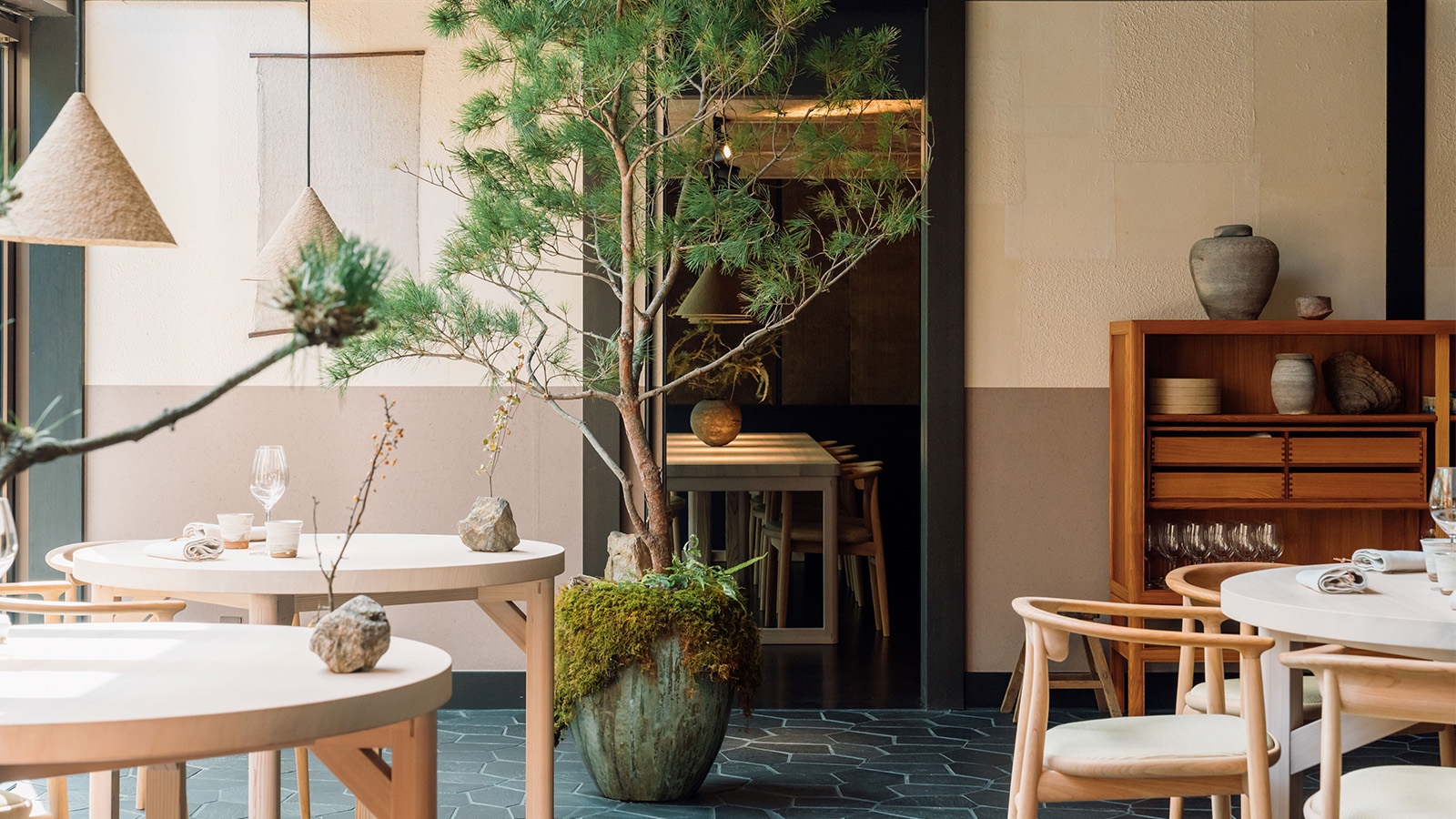
Hand-stitched leaves in fiery shades. Persimmon-dyed sake sacks. Expanses of thatching. Bespoke wood furniture. Autumn – with its flavours, leaves, ingredients, colours, textures – is the creative and culinary springboard for Noma Kyoto’s return to Japan. The celebrated Nordic food pioneers this week open a pop-up for the second time in the ancient city (the 2023 Noma pop-up was with the same collaborators), inspired by all things autumnal.
The seasonal influence is etched onto not only the inventive contents of the perfectly crafted Japanese plates – it’s also written into the DNA of the spatial design, again brought to life by Copenhagen-based OEO Studio. Noma Kyoto – along with its entirely relocated restaurant staff – opens its doors on 8 October for a ten-week pop-up inside Ace Kyoto, following the success of its inaugural stint in the city during spring last year.
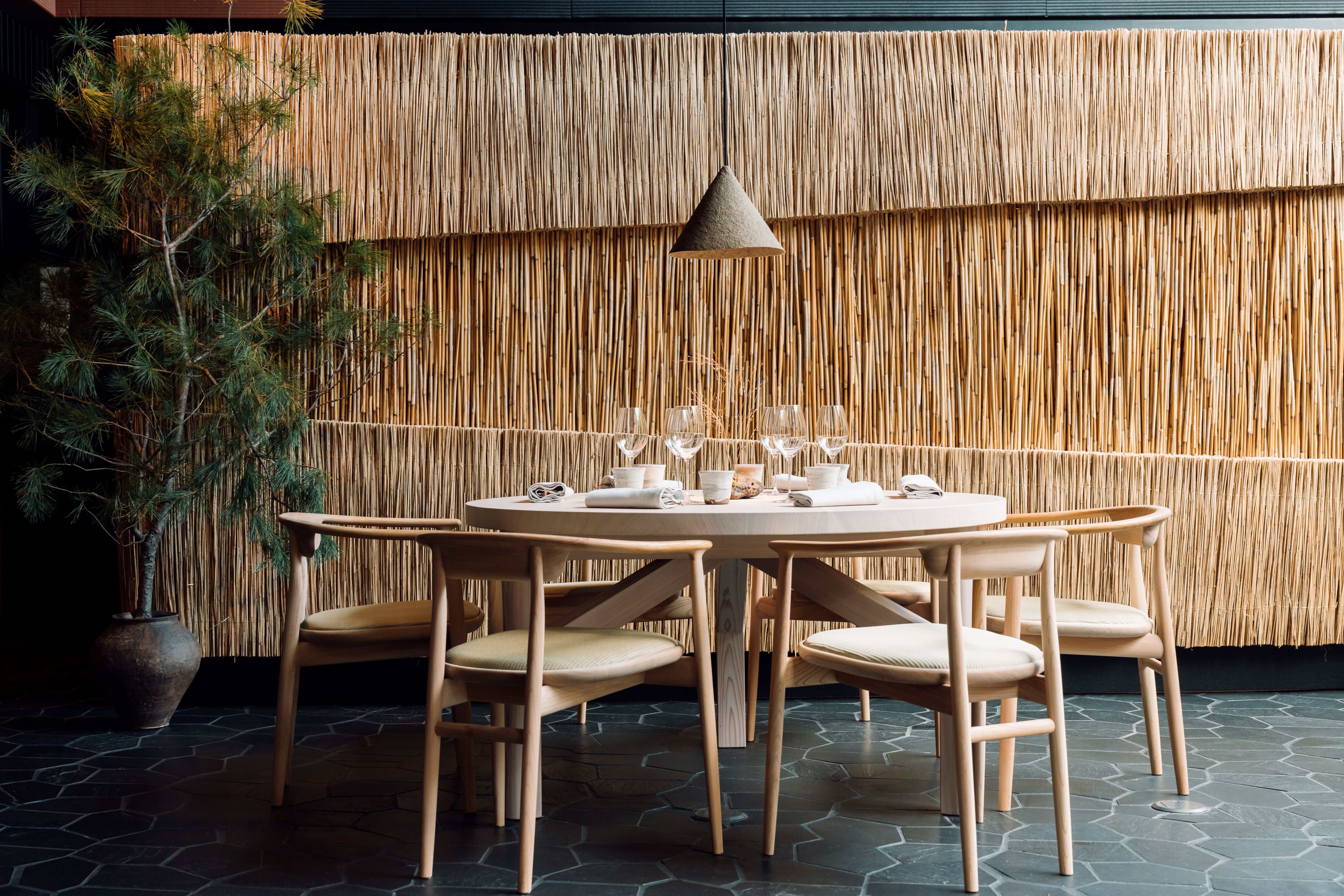
The restaurant, helmed by cult chef René Redzepi (co-author of the Noma recipe book, published in 2022), spans the same venue as last year – the strongly structured, cavernous main dining space at Ace Kyoto, with double-height walls of glass overlooking tiered gardens. Last time, it was all about spring, layered with an ethereal underwater theme expressed through a ‘forest of seaweed’. This year, the atmosphere shifts, courtesy of its crafted autumnal makeover in the hands of OEO Studio and Noma’s interior stylist Christine Rudolph, who has been busy collecting leaves and natural objects from across Japan.
Here, Thomas Lykke, co-founder of OEO Studio alongside Anne-Marie Buemann, takes Wallpaper* on an exclusive early tour ahead of the opening (with a few friendly interruptions from Redzepi and Rudolph), exploring the pop-up’s design details, from forest to furniture.
Noma Kyoto returns
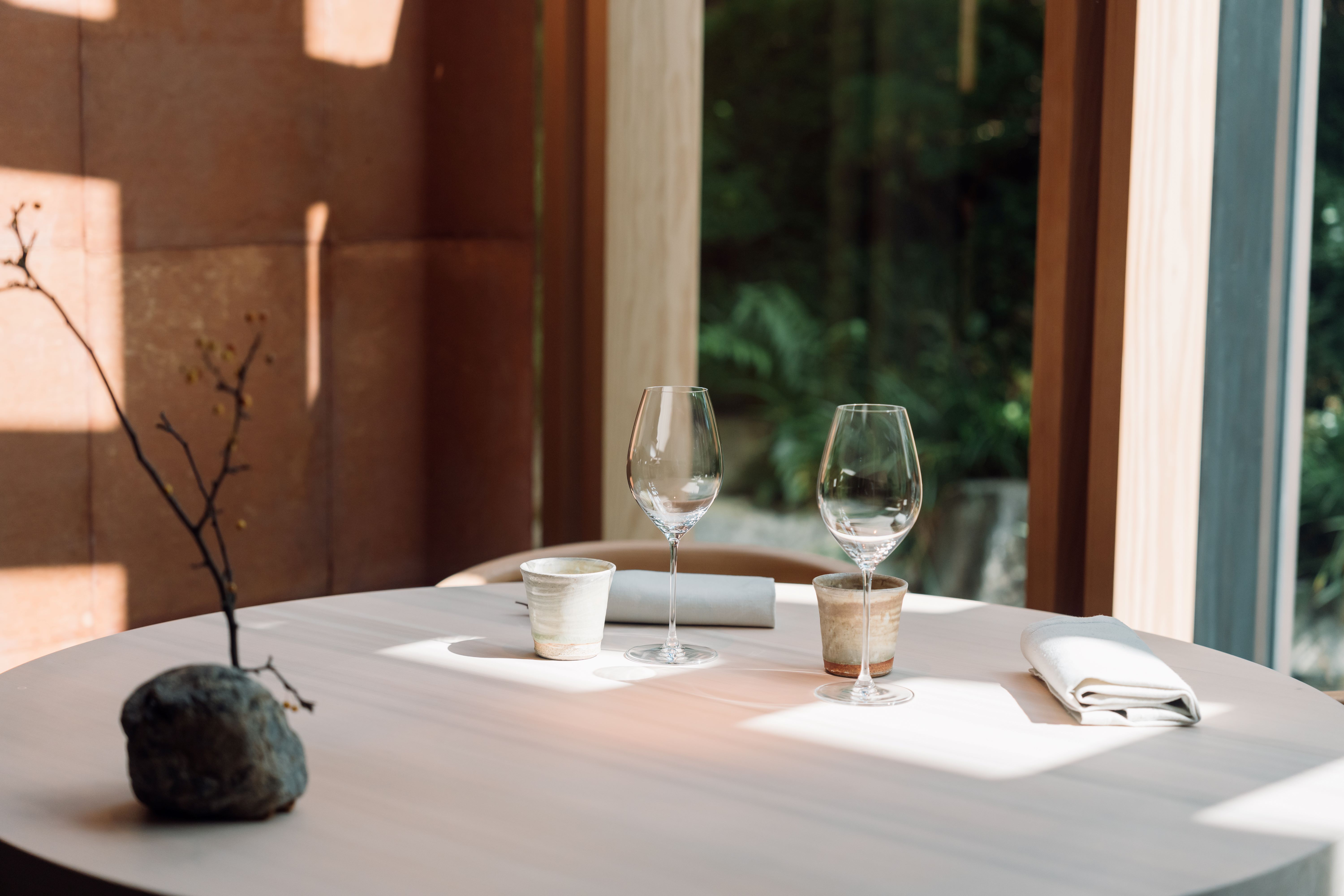
Wallpaper*: Can you sum up what’s around us in three words?
Thomas Lykke: Intimacy. Forest. Colours.
W*: What’s the seed of the design?
TL: Forests. We wanted to create something completely different from last year’s underwater theme in spring. This time, we were very inspired by the forest and its colours, so the idea is to bring this inside. In the main restaurant space, we’ve built a wooden pavilion, a frame, from which we are hanging about 5,000 autumn leaves in a gradation of autumn colours. They’ve been pressed and hand sewn and then attached to the pavilion. The interior lights flicker through the leaves from above, so even though we are inside, it creates this effect of komorebi – the beautiful Japanese word referring to sunlight filtering through trees. We wanted to create something completely different from last year’s underwater theme in spring.

W*: And the foundation of this idea?
TL: The pavilion is very important. It’s a frame in the main restaurant space. It's Dinesen wood – Douglas fir from the Black Forest in Germany. We drew it and had it produced in Jutland and then shipped over. It was all pre-cut so we kept our fingers crossed it would fit – luckily, it does. It’s a contemporary take on traditional Japanese joinery, so it was made without nails, inspired by the temples of Japan. At Noma in Copenhagen, Dinesen is a thread going through the restaurant there too – so it’s like bringing a piece of Noma Copenhagen here.
W*: How does it impact the atmosphere?
TL: It creates a journey. What do we need when the seasons change and it starts getting cold? We need to be welcomed and embraced. This pavilion helps create an embracing and welcoming atmosphere. It’s also practical. It gives us a framework to hang leaves on. And it brings down the high ceiling – but it doesn’t close it off, you still get the openness and light from above. But it all feels more encapsulated and protected. It helps with acoustics too.
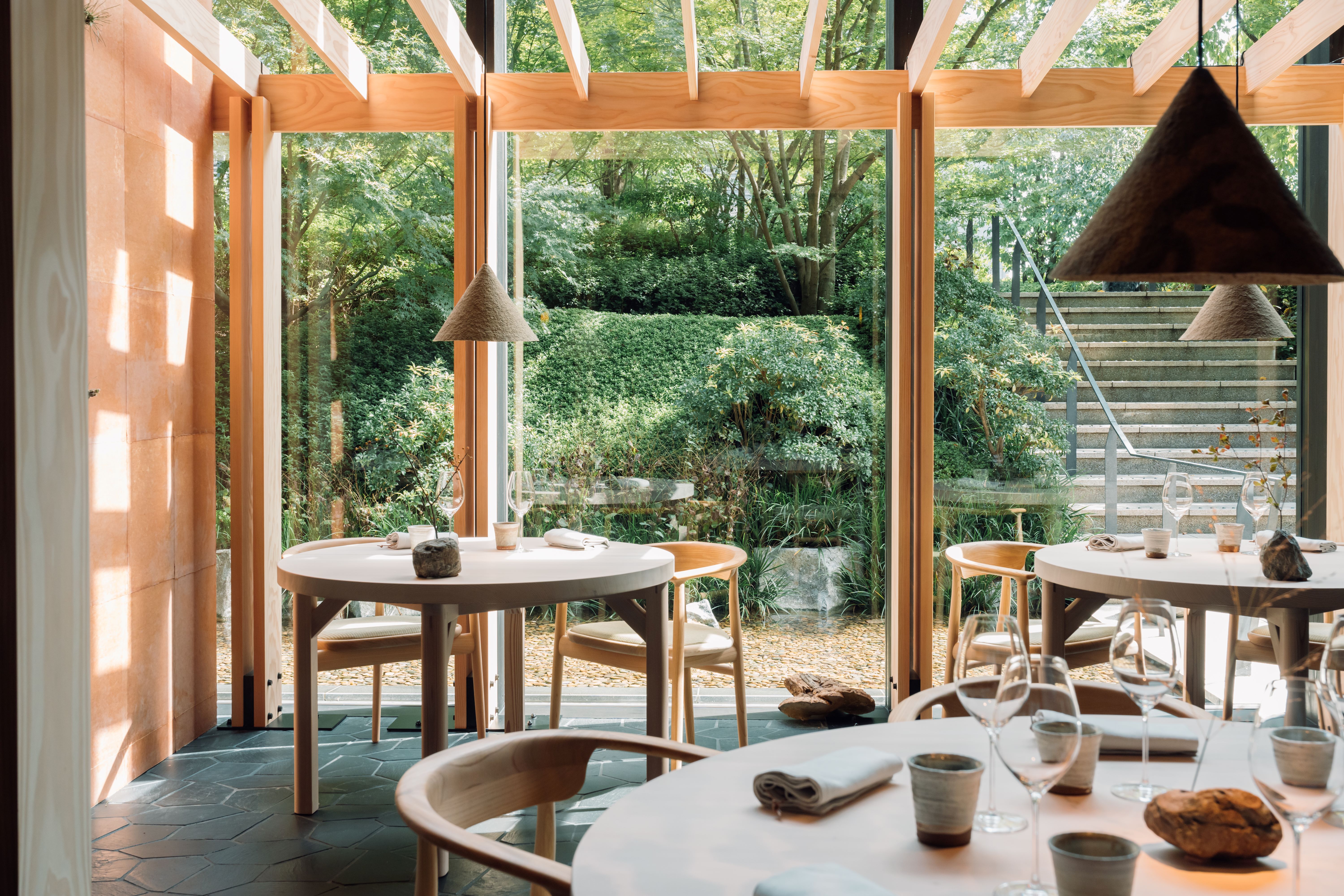
W*: And so many leaves – where did these come from?
TL: Christine [Rudolph, Noma's interior stylist] has been collecting all the leaves.
Christine Rudolphe: There are 5,000 leaves, all pressed and hand-sewn. It’s all taken about a year, from gathering the leaves since last autumn, to drying and sewing. I found the leaves mainly in Japan, some in Denmark. Whenever we visited craftspeople in Japan, I would ask if I could take some leaves with me. We have many plants and wood from forests and other objects from nature, installed all around us. This one here is a cucumber magnolia – its large leaves look a bit like tobacco. I was very excited when I found these leaves behind a little shed while visiting a ceramicist in rural Japan. It’s amazing how much beauty can be found in a leaf when you look closely.
TL: We wanted this space to pay tribute to Christine's finds from the forest and also Japanese craftsmanship techniques.
W*: Can you tell me more about the craftsmanship elements?
TL: The entrance desk is wrapped in beautiful traditional thatching by artisan Ikuya Sagara. He also created a stretch of thatching with contemporary lines in the main restaurant space – it spans one wall and hides the bar. We also worked with washi artist Wataru Hatano to create persimmon-dyed paper panels to cover the column in the middle of the restaurant – the colours blend perfectly with autumn. There are also persimmon-dyed sake bags on screens, and mirrors are covered with eel grass seaweed boards from Denmark, which feels warm and organic, plus helps acoustics and has a link to the kitchen.
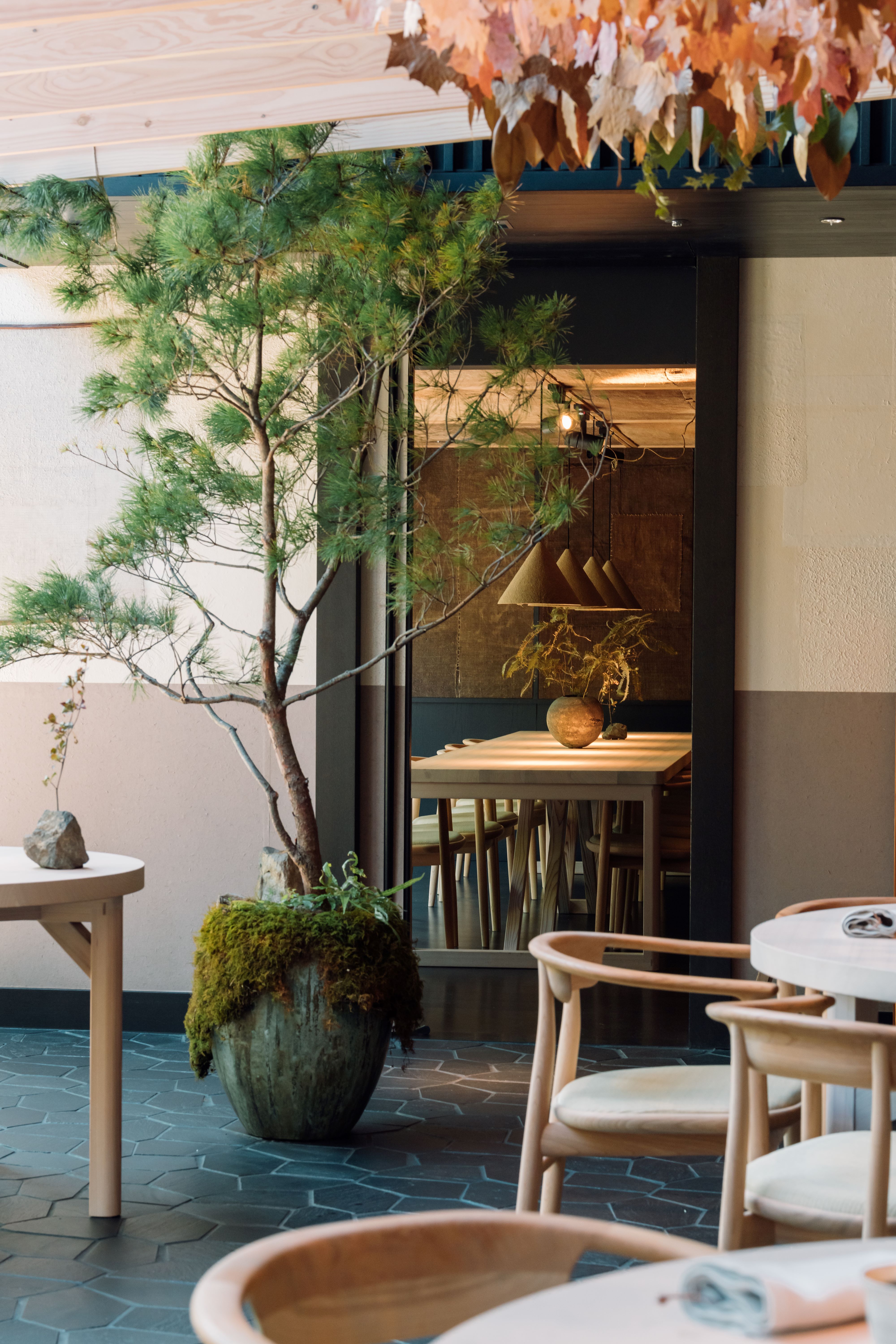
W*: How did the furniture come to life?
TL: We collaborated with Time & Style to make these tables and chairs. We work with incredible craftspeople all over Japan who typically specialise in one technique – for example, ceramics or textiles. But what’s amazing about Time & Style is that they are so broad and yet nothing is compromised – you can feel such a deep passion for craftsmanship, quality and tradition, with an eye for bringing things into a new context, so the works sit beautifully in Milan, Amsterdam, New York or Tokyo. The founder Yoshida-san even flew to Denmark with the first prototype of the chair and we all went to Noma and sat on it to test it.
W*: Can you highlight some furniture design details?
TL: The chairs we designed have a tatami seat, which we think is a first. No one has done three-dimensional tatami before – but we asked our collaborator Mitsuru Yokoyama in Kyoto if he could take on this challenge. Tatami is normally square and one-dimensional – but our suggestion was that as you can steam-bend wood, why not the same for tatami? I don’t know how he did it exactly but he managed. The wood is Zelkova, which is very sacred in Japan, used in temples. The table is made using Yoshino Sugi, cedar wood from Nara. It’s been growing for 150 years to create this long length. And the wooden construction underneath is like a building, it has no nails. Both the chair and tables were designed to show the beauty of the natural material.
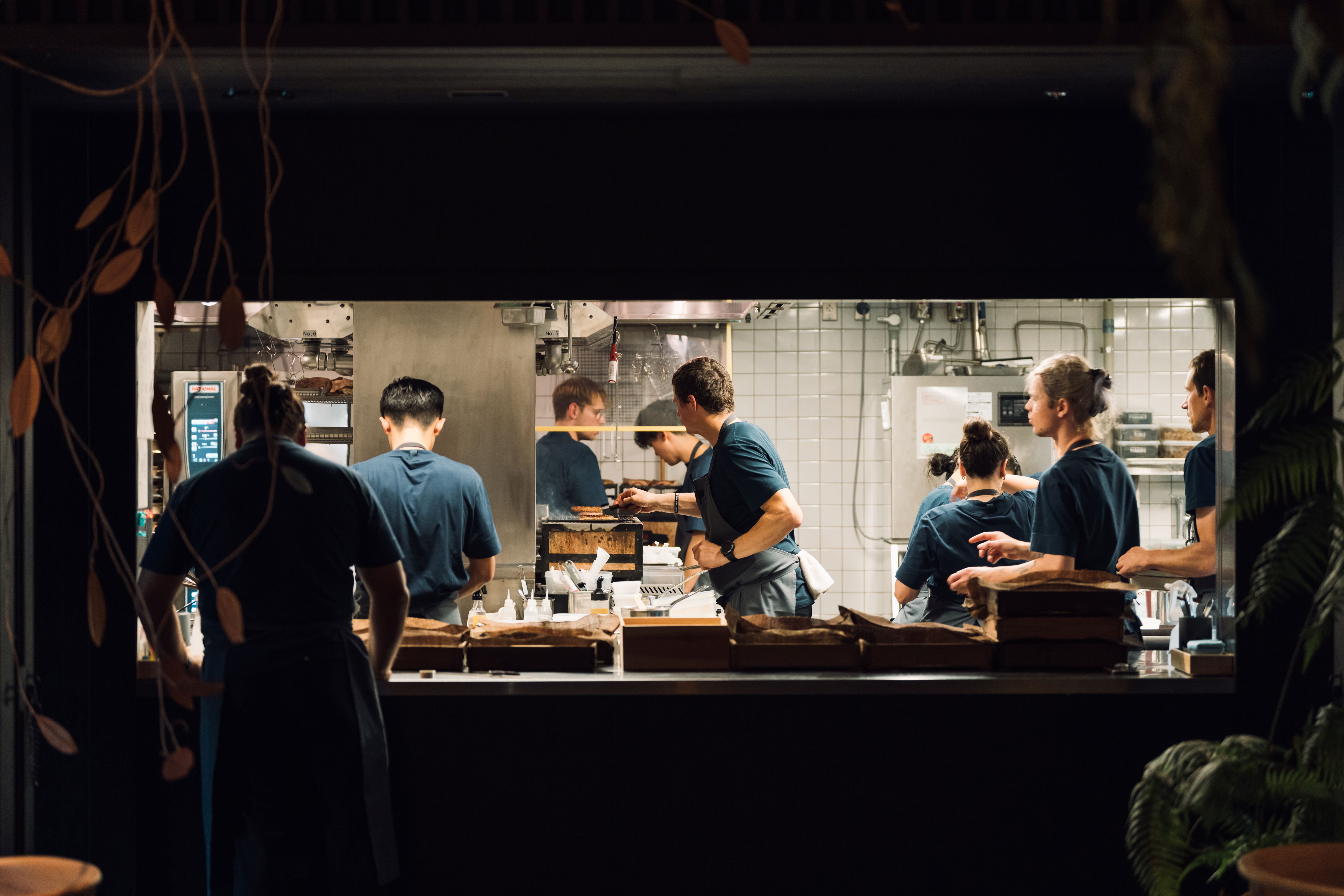
W*: How is it all different this year?
René Redzepi (taking a quick break from the test kitchen to join us): We are two layers deeper this time. It’s a completely different season and all the thinking for the past three years has naturally grown into a new chair, or a new table. It’s all evolved and become much better. It’s more crafted, clean and cosy. We are more confident stepping into this. We even have a leaf library. What we are doing here is basically setting up a stage.
W*: Same with the food?
RR: Yes absolutely. We are more authentic this time. And less worried about whether we’re being respectful to the ingredients. Autumn is also one of my favourite times of the year, along with spring. To experience these seasons in Kyoto is a must try in a lifetime.
W*: What imprint do you hope this whole experience will leave on people?
TL: It’s all about creating a journey. It’s important for people who came here last year to have a completely different experience. We want to double-wow them this time.







